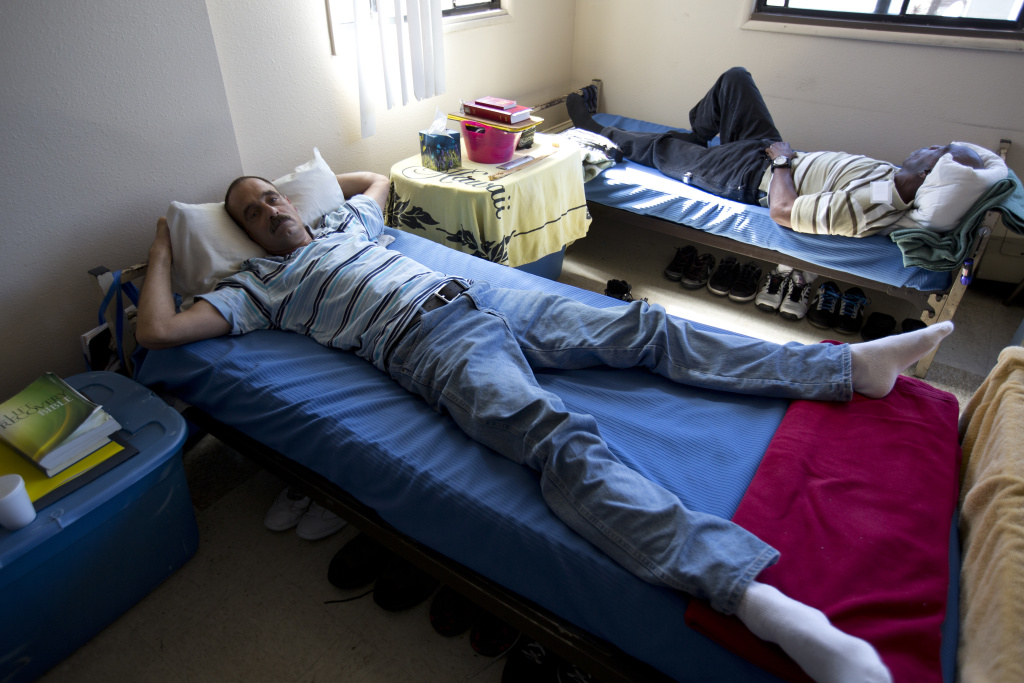A proposed homeless shelter in Orange County is finding itself in a familiar predicament: the target of protests by residents worried about high crime rates and low property values.
Orange County supervisors are holding a public hearing November 17 about plans to build a shelter with up to 200 beds located at 1000 N. Kraemer Place in a light industrial area of Anaheim. Among the points of discussion will be ways the shelter operators can placate neighbors who’ve been holding community meetings to organize against the shelter and plopping signs in their yards protesting the choice of site.
“I do not want my family exposed to the danger, the drugs and the Skid Row feeling that this plan will bring to our community,” Angie Armenta, who lives nearby, told a crowd of hundreds at a meeting in September.
It’s not the first time the shelter’s faced opposition–Orange County has been through three failed attempts to place the site in Santa Ana, Fullerton, and a separate location in Anaheim.
Shelters, it seems, aren’t really welcome anywhere. Despite a growing homeless population, it’s been hard for officials in Orange and Los Angeles counties to find communities willing to host any type of homeless services.
“It’s aesthetic, homeless people don’t usually look too good,” said Rabbi Marvin Gross, who runs the 56-bed Union Station Homeless Services emergency shelter in Pasadena. And oftentimes, out of fear or a lack compassion, he said, people shun the homeless.
“They’re afraid of them or they find them repugnant,” Gross said.
Over the years, Union Station, which is down the street from KPCC’s studios, has found a way to coexist with retail, businesses, residents, and a daycare next door. Volunteers and staff at the shelter pick up trash on surrounding streets. When a rowdy group this year attracted to the shelter’s meals drew complaints, officials changed the organization’s policy to only serve people who enroll in programs.
In Long Beach, the 200-bed Long Beach Rescue Mission hasn’t always had the best relationship with the city, said Executive Director Chaplain Robert Probst, but it’s made strides by providing services to the neighborhood.
“The way we present it is so important because it shouldn’t be a deterrent,” he said. “It should be a light. It should be a breath of hope.”
The shelter’s meal schedule works around the class schedule of the middle school across the street. Shelter staff and clients staying there keep the homeless from camping in the adjacent park. And residents of the parking-strapped neighborhood are allowed to use the Mission’s lot after hours.
Parents and young skateboarders living near the Mission have mixed feelings about the shelter. Some would rather not have homeless people in the neighborhood – they ask for free cigarettes or stare at kids – but residents say they feel crime has gone down compared to five or ten years ago.
“My kids haven’t had an issue coming to the skate park or the park,” said Marlene Robles who has lived in neighborhood for five years. “It’s just with certain homeless (persons) that come up to them and try to say hi.”
A commanding officer for the Long Beach Police Department said the department does not track homeless-related crime and declined to discuss crime surrounding the shelter.
In Pasadena, Lt. Mark Goodman of the Pasadena Police Department said he’s hesitant to link crime around Union Station to the homeless shelter. But the general public seems to be making that link. About a third of the department’s calls each day involve the homeless–but they don’t necessarily involve crimes.
“Maybe they began as a report of a suspected crime,” he said. “Our officers get there, they find there’s no crime that took place, or it’s a completely different type of incident.”
In Orange County, the Anaheim Police Department is promising extra patrols and surveillance cameras in the area surrounding the proposed 200-bed homeless shelter in The Canyon area. On-site private security will also be provided, Orange County officials said at the September meeting.
Proponents argue the shelter will actually improve the surrounding area. Officials say the shelter operator will be required to hold quarterly advisory board meetings that residents and business owners can sit on and the public can attend.
There’s no data to support the idea that shelters ruin neighborhoods, homeless advocate Larry Hanes told the crowd gathered at a recent community meeting.
“But what the data does support is that shelter linked to housing ends homelessness,” he said.
That argument, however, hasn’t swayed many, like Michael Chew, a real estate agent who lives across the freeway, less than a mile from the proposed shelter site. Chew is with the Orange-Riverdale Homeowners Alliance that opposes the shelter site.
He said homeless camps have grown along the nearby Santa Ana River Trail and worries when the homeless shelter gets full, people will choose to sleep along the trail or in his neighborhood. And then, there’s no turning back.
“If it doesn’t work out or if the shelter becomes problematic, is the county going to close the shelter then,” Chew questioned. “Or will it always be a problem for us going forward.”

